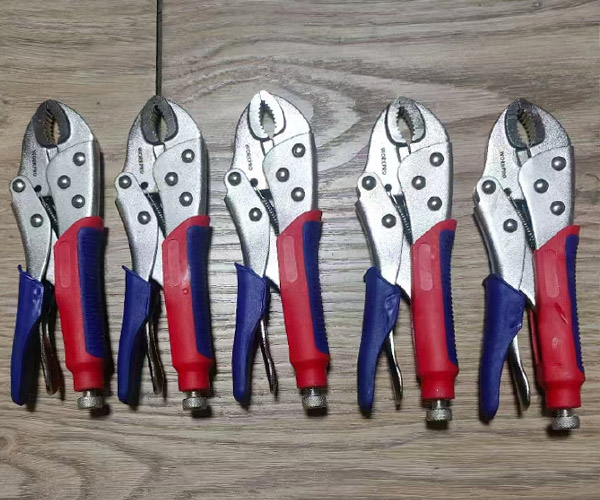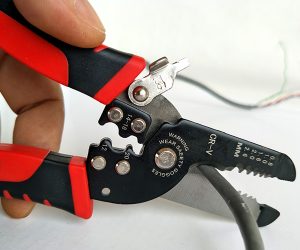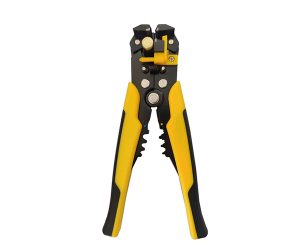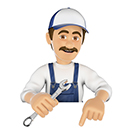Introduction
Have you ever struggled with holding, clamping, or loosening objects while working on DIY projects or professional tasks? If so, locking pliers might just be the solution you need. These versatile tools are a must-have for anyone tackling repairs, maintenance, or construction. With their unique locking mechanism and adjustable grip, locking pliers make challenging tasks manageable. Professionals and hobbyists alike rely on them for their exceptional durability and functionality. Whether you’re a seasoned mechanic or a casual DIY enthusiast, understanding the uses of locking pliers will empower you to work smarter, not harder.
What Are Locking Pliers?
Definition of Locking Pliers
Locking pliers, also known as Vise-Grips or mole grips in some regions, are an advanced version of traditional pliers. They are designed to lock tightly onto objects, offering an unparalleled grip that stays firm until released. Unlike standard pliers, locking pliers feature a unique mechanism that can maintain constant pressure without requiring continuous squeezing. This makes them perfect for applications where stability and control are essential.
Key Features of Locking Pliers
The standout feature of locking pliers is their locking mechanism. This mechanism is controlled by an adjustable screw, allowing users to set the grip strength according to their needs. Additionally, the release lever ensures that the pliers can be disengaged effortlessly. Their jaws are typically made from hardened steel for durability and come in various shapes and sizes to suit different tasks.
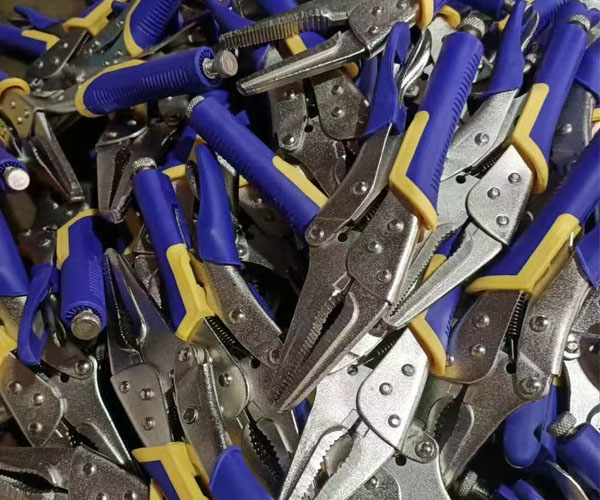
Common Types of Locking Pliers
Locking pliers are available in a range of types, each designed for specific applications. Curved jaw locking pliers are ideal for gripping rounded objects like pipes, while straight jaw locking pliers provide a firm grip on flat surfaces. Long nose locking pliers excel in reaching tight or awkward spaces, making them invaluable in detailed work. Welding clamps, another variation, are used by professionals to hold metal sheets securely during welding.
How Do Locking Pliers Work?
The Mechanism Explained
Locking pliers operate using a simple yet effective mechanism. The adjustable screw at the handle’s base allows the user to set the jaw’s tension. Once adjusted, the jaws can be closed around an object, and the locking mechanism clicks into place. This ensures the tool maintains its grip until the release lever is activated. This feature eliminates the need for continuous hand pressure, providing comfort during prolonged use.
Adjusting the Tension
Setting the correct tension is crucial for effective use. By turning the screw clockwise, the jaws become tighter, while turning it counterclockwise loosens the grip. This adjustability makes locking pliers suitable for a wide range of tasks, from delicate work like gripping small wires to heavy-duty applications such as holding metal pipes. The ability to fine-tune the grip ensures that the tool can adapt to various materials without causing damage.
Common Uses of Locking Pliers
Gripping and Holding Objects
Locking pliers excel in securely gripping objects of various shapes and sizes. Whether you’re trying to hold a pipe steady while tightening a joint or keeping a bolt from spinning while unscrewing it, locking pliers provide the stability needed to complete the task. Their ability to lock into place ensures that the object remains firmly held, even if the user needs to switch focus.
Clamping Materials Together
Locking pliers are often used as temporary clamps in projects where precision and stability are key. For example, during woodworking or metalworking, they can hold pieces together while glue or welding sets. This makes them an excellent substitute for traditional clamps in situations where quick adjustments are needed.
Twisting and Turning
Locking pliers are perfect for applying torque to objects that are difficult to grip with bare hands. Whether you’re loosening a rusted bolt or tightening a fitting, the strong grip of locking pliers allows for efficient force application. They can also be used to twist wires or cables during electrical work, making them a versatile tool in various trades.
Locking Pliers for DIY Projects
Household Repairs
Locking pliers are invaluable for everyday household fixes. From holding small components during repairs to removing stubborn nails, they make challenging tasks manageable. They’re especially useful for plumbing tasks, such as gripping pipes or valves during maintenance work.
Automotive Applications
Locking pliers are a staple in automotive repairs. They can grip and hold hoses, loosen bolts, or even clamp fuel lines during replacements. For mechanics, having a pair of locking pliers on hand is essential for addressing unexpected challenges in tight or awkward spaces.
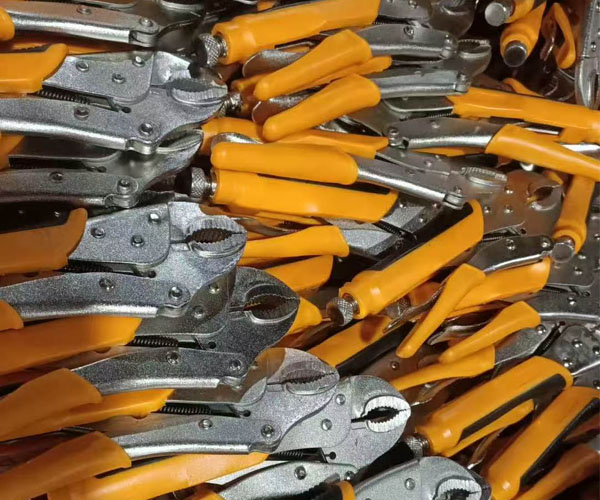
Locking Pliers in Professional Applications
Woodworking
In woodworking, locking pliers help secure materials while cutting, drilling, or sanding. Their strong grip ensures that the pieces stay in place, allowing for precise and safe work.
Metalworking and Welding
Professionals in metalworking often rely on locking pliers to hold metal sheets securely. Welding clamps, a specialized type of locking pliers, are particularly useful in holding pieces together during welding, ensuring alignment and stability.
Plumbing and Electrical Work
Locking pliers play a significant role in gripping pipes, tightening fittings, and twisting wires. Electricians use long nose locking pliers for reaching into electrical boxes or gripping delicate wires during installations.
Specialized Uses for Locking Pliers
Using as a Makeshift Wrench
In situations where a wrench is unavailable, locking pliers can serve as a reliable substitute. Their adjustable jaws can grip bolts, nuts, and other fasteners, providing the necessary torque to loosen or tighten them.
Crimping and Cutting Wires
Locking pliers with integrated wire cutters can handle basic electrical tasks such as cutting and crimping wires. This multi-functional capability makes them a convenient tool for electricians and DIY enthusiasts.
Removing Broken Fasteners
When screws, bolts, or nails become stuck or stripped, locking pliers can grip and remove them with ease. Their firm hold ensures that even stubborn fasteners can be extracted without additional tools.
What Are the Different Types of Locking Pliers?
Curved Jaw Locking Pliers
These pliers are designed for gripping rounded objects such as pipes and rods. Their curved jaws provide maximum contact with the surface, ensuring a firm grip.
Straight Jaw Locking Pliers
Straight jaw pliers are ideal for gripping flat objects like metal sheets or wooden boards. They offer precise clamping for tasks that require accuracy and stability.
Long Nose Locking Pliers
Long nose pliers are perfect for reaching tight spaces or handling small objects. Their slender design makes them a go-to tool for intricate tasks.
Choosing the Right Locking Pliers for the Job
Consider Your Needs
Selecting the right type of locking pliers depends on the task at hand. Consider the shape and size of the object you’ll be working with, as well as the level of grip required.
Quality vs. Price
While budget options are available, investing in high-quality locking pliers ensures durability and reliability. Look for tools made from hardened steel with ergonomic grips for added comfort.
Tips for Using Locking Pliers Effectively
Adjusting Properly
Always set the tension correctly to avoid damaging the material or tool. Practice adjusting the screw until you achieve the desired grip strength.
Avoiding Damage
When working with delicate materials, use padding or a cloth to prevent scratches or dents. Proper handling ensures that your locking pliers remain versatile and effective.
Care and Maintenance of Locking Pliers
Cleaning After Use
Wipe down your locking pliers after each use to remove dirt, grease, or debris. This prevents rust and ensures smooth operation.
Lubrication Tips
Apply lubricant to the locking mechanism and adjustment screw regularly. This keeps the tool functioning smoothly and prolongs its lifespan.
Proper Storage
Store your locking pliers in a dry, organized space to prevent damage and corrosion. Using a toolbox or tool rack can help keep them in top condition.
Common Mistakes to Avoid When Using Locking Pliers
Over-Tightening the Grip
Excessive tension can damage both the tool and the material. Adjust the screw carefully to apply the right amount of pressure.
Using the Wrong Jaw Type
Choose the appropriate jaw type for the task to ensure efficiency and avoid unnecessary wear and tear on your pliers.
Locking Pliers vs. Other Tools
Comparison with Regular Pliers
Locking pliers offer a locking mechanism that regular pliers lack, providing a stronger and more secure grip.
Comparison with Clamps
While clamps are ideal for long-term holding, locking pliers are more versatile and quicker to adjust, making them suitable for temporary tasks.
Comparison with Wrenches
Locking pliers can substitute for wrenches in emergencies, though they lack the specialized design of a dedicated wrench.
Innovations in Locking Pliers
New Features and Designs
Modern locking pliers come with ergonomic handles and multi-functional capabilities, such as integrated wire cutters or crimpers.
Multi-Functional Locking Pliers
These tools combine multiple functions, making them a versatile addition to any toolkit. They save space and enhance productivity.
Recommended Brands for Locking Pliers
Top-Rated Brands
Brands like Irwin, Craftsman, and DeWalt are known for producing durable, high-quality locking pliers.
Budget-Friendly Options
Affordable brands like Tekton or generic options from hardware stores offer reliable tools for casual users and DIYers.
Conclusion
Locking pliers are an essential tool for anyone tackling challenging tasks. Their versatility, durability, and ease of use make them indispensable for professionals and DIY enthusiasts alike. By choosing the right type and maintaining them properly, you can ensure they remain a reliable part of your toolkit for years. Are you ready to take your brand to the next level with custom OEM locking pliers? KOLARWIN TOOLS is here to help! Let’s create your unique product together. Reach out to us today!

